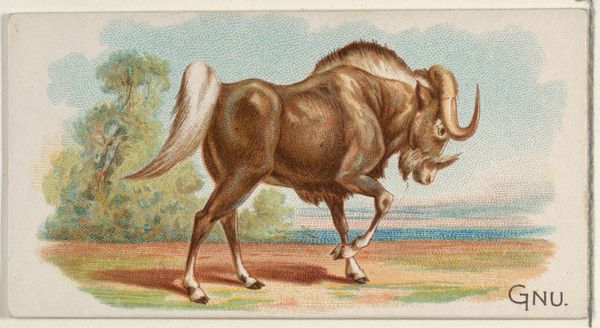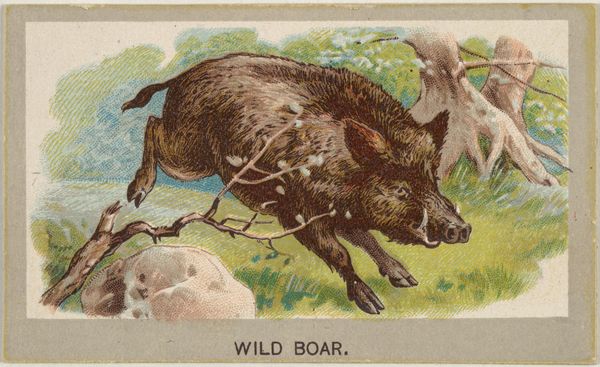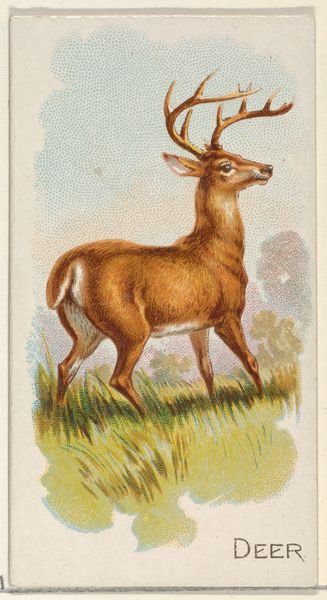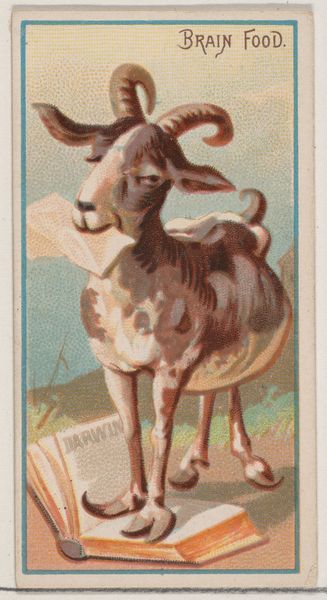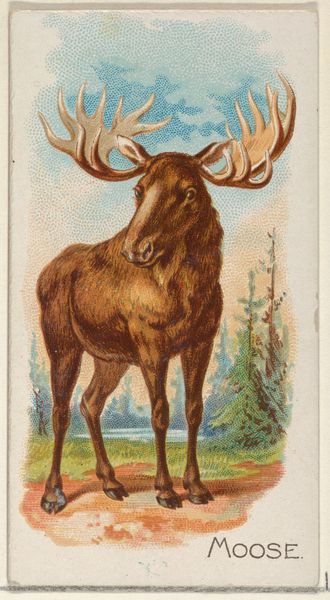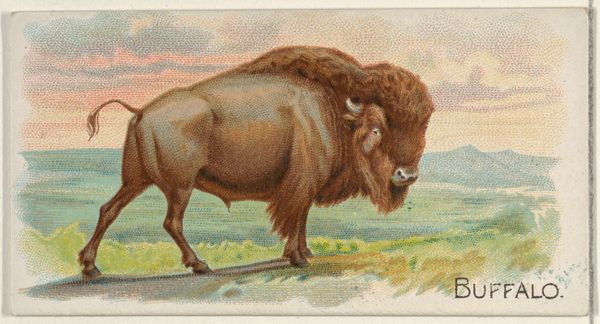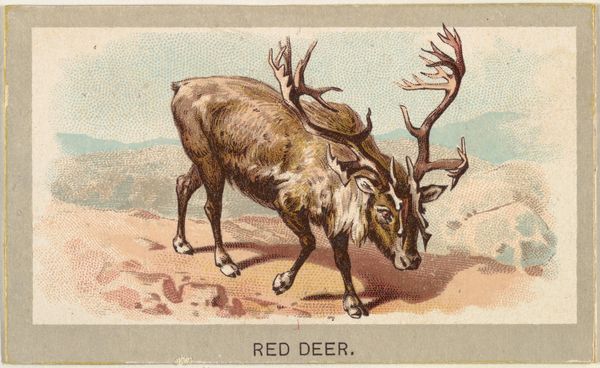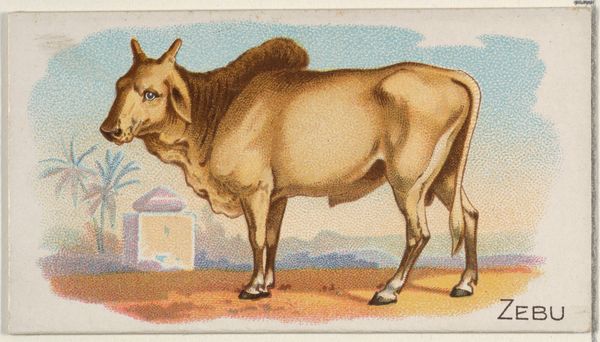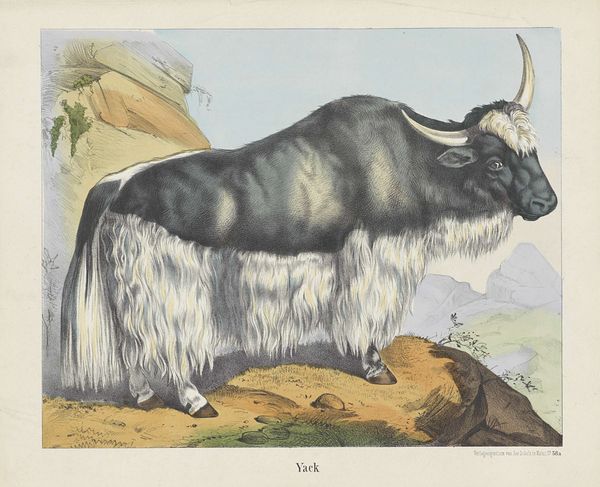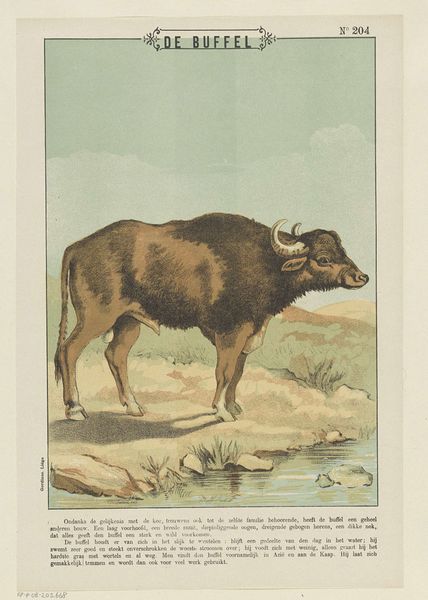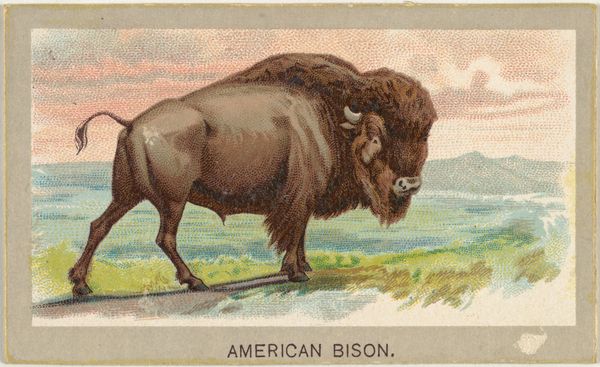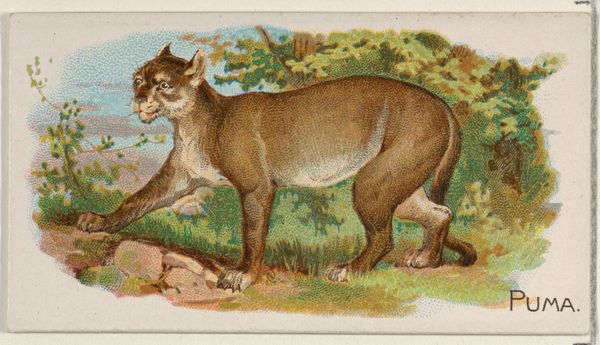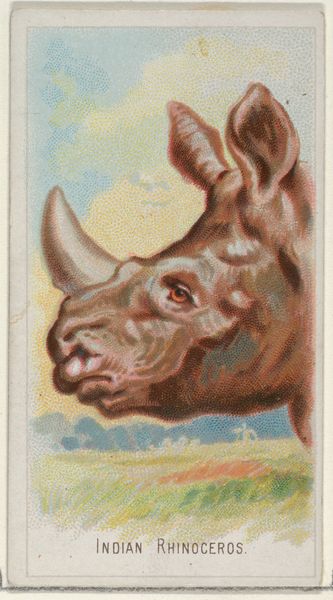
White-Tailed Wildebeest, from the Animals of the World series (T180), issued by Abdul Cigarettes 1881
0:00
0:00
drawing, coloured-pencil, print
#
drawing
#
coloured-pencil
#
animal
# print
#
impressionism
#
coloured pencil
Dimensions: Sheet: 1 5/8 × 2 3/4 in. (4.2 × 7 cm)
Copyright: Public Domain
Curator: Let’s discuss "White-Tailed Wildebeest," a coloured-pencil drawing dating back to 1881, originating from the Animals of the World series issued by Abdul Cigarettes. Editor: It strikes me as quaintly imposing; a sturdy animal rendered with surprisingly delicate colours for the subject matter. A pastel sort of toughness. Curator: As part of a cigarette card series, its purpose was less about high art and more about commerce, mass production, and the marketing of tobacco products. Editor: That contextual grounding certainly alters my perspective. I was initially focused on the interplay of light and shadow defining the wildebeest’s musculature, and the impressionistic rendering of the landscape behind it, especially its texture, now understanding its nature as promotional print reframes these elements. Curator: Precisely. The choice of subject speaks volumes about colonial-era interests in exotic wildlife and its potential for commercial exploitation in a way it exoticises the land where this animal roams. It subtly links the allure of faraway lands with the indulgence of smoking. The cigarette manufacturer would have targeted smokers who had colonial links or some sort of interest. Editor: Interesting. Though formally, the animal itself is quite striking, rendered in remarkable detail with layers of pencil. It also appears carefully positioned to showcase the texture in its coat and of the landscape. It certainly would catch the consumer’s attention in the store. Curator: These cards were hugely successful, fostering brand loyalty whilst also tapping into burgeoning popular interest in natural history at that time. The cigarette cards can then also be a kind of material 'teaching' artefact to support zoological categorisation for entertainment. Editor: Viewing it from that production angle adds depth. Initially, the use of colored pencil suggested artistic intention; the formal qualities gave the illustration a high art veneer, but with context in mind, these traits now suggest craftsmanship aimed at wider circulation and accessibility through commodification. Curator: Absolutely. It is an artifact embedded in its time's economy of desire. Editor: So, from close readings to industrial processes, our perspectives show this isn’t just art, but a relic from an older network of desire and commodity. Curator: Indeed, something seemingly simple carries much to consider.
Comments
No comments
Be the first to comment and join the conversation on the ultimate creative platform.
